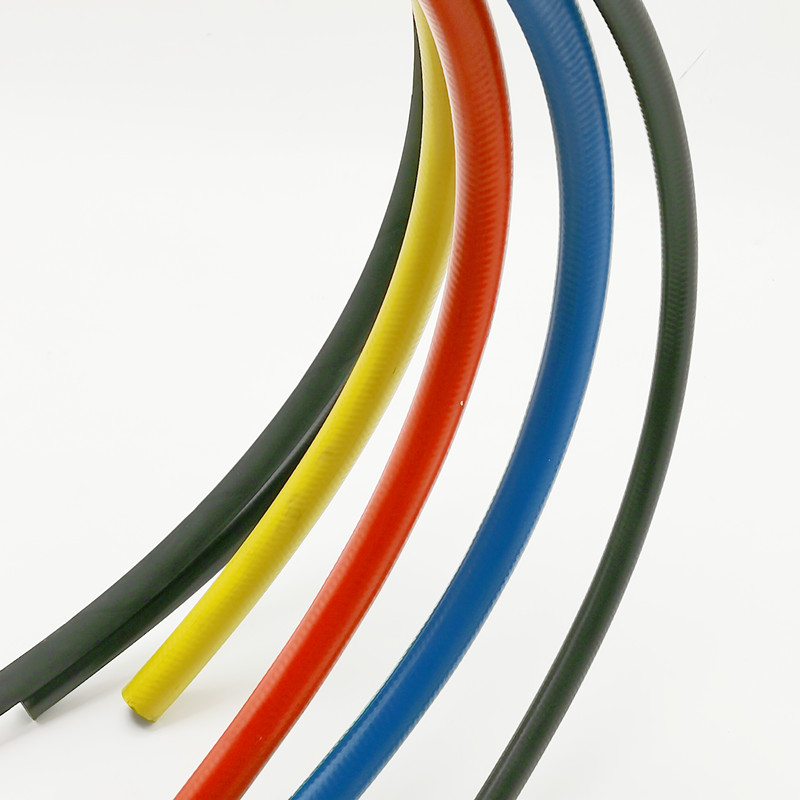335345435
Dec . 09, 2024 22:09 Back to list
Different Varieties of Flexible Hoses Used in Various Applications and Industries
Understanding the Different Types of Flexible Hoses
Flexible hoses are an essential component in various industries, providing the necessary flexibility to connect different equipment, convey fluids, and facilitate movement without compromising performance. They are highly versatile and designed to withstand various pressures and temperatures. In this article, we will explore the different types of flexible hoses, their applications, and key features to consider when selecting a suitable option.
1. Material Composition
The composition of flexible hoses varies significantly, leading to different types catering to specific applications. Common materials include
- Rubber Hoses Often used in automotive and consumer applications, rubber hoses offer excellent flexibility, resistance to aging, and can handle a moderate range of temperatures. - PVC Hoses Polyvinyl chloride (PVC) hoses are lightweight and resistant to many chemicals, making them suitable for agricultural and industrial applications. They are commonly used for watering, irrigation, and drainage.
- Metal Hoses These are typically constructed from stainless steel or other metals, providing durability and resistance to extreme temperatures and pressures. They are ideal for high-pressure applications in industries like aerospace, automotive, and chemical processing.
- Composite Hoses Made from multiple layers of materials, composite hoses offer a combination of flexibility, strength, and chemical resistance. They are widely used in the transport of hazardous materials.
2. Types Based on Structure
Flexible hoses can also be classified based on their structural design
- Single Wire Braid Hoses These hoses feature a single layer of braided wire reinforcement, making them suitable for low to medium-pressure applications. They are often used in hydraulic systems.
- Double Wire Braid Hoses With an additional layer of wire braid, these hoses are designed for higher pressure situations, providing added strength and stability. They are commonly found in heavy-duty hydraulic systems.
- Spiral Hoses Constructed with spiral-wound wire, these hoses are suitable for extremely high pressures and are often used in industrial applications where flexibility is crucial
.3. Applications of Flexible Hoses
The versatility of flexible hoses allows them to be utilized in numerous applications
types of flexible hose

- Automotive In vehicles, flexible hoses are used for coolant lines, fuel lines, and exhaust systems. Their flexibility allows for movement and vibration absorption, ensuring consistent operation.
- Construction Flexible hoses play a critical role in construction machinery, where they facilitate the transfer of hydraulic fluids and other materials.
- Agriculture In farming, hoses are needed for irrigation systems and transporting various liquids, including fertilizers and pesticides.
- Chemical Process Industries Chemical resistant hoses are vital for safely transporting corrosive substances and fluids in chemical manufacturing and processing plants.
4. Key Considerations When Choosing Flexible Hoses
When selecting a flexible hose, several key factors should be considered to ensure compatibility and efficiency
- Pressure Rating Determine the maximum pressure that the hose will need to withstand during operation. Selecting a hose with an appropriate pressure rating is crucial to avoid failure.
- Temperature Range Different materials can handle varying temperature levels. Make sure to choose a hose that can withstand the operating temperature of the application.
- Chemical Compatibility Ensure the hose material is compatible with the fluids it will transport. Using the wrong material can lead to degradation and potential hazards.
- Bend Radius Consider the minimum bend radius of the hose. A tight bend can restrict flow and might damage the hose over time.
- Length and Diameter Assess the required length and diameter of the hose based on the intended use. Correct sizing is essential for optimal fluid transfer.
Conclusion
Flexible hoses are invaluable in connecting systems and supporting fluid transportation across various industries. With different types available—ranging from rubber and PVC to metal and composite hoses—it's essential to choose the right type based on the specific application requirements. By understanding the features and considerations associated with flexible hoses, individuals can make informed decisions that enhance safety and efficiency in their operations. Whether for automotive, agricultural, or industrial use, the right flexible hose can make all the difference in performance and longevity.
-
Premium Distribution PTFE Hose | Flexible & Stainless Braided
NewsAug.23,2025
-
Premium Distribution PTFE Hose: Flexible & Durable Solutions
NewsAug.22,2025
-
SAE 100 R3 / EN854 R3 Hydraulic Hose | Medium Pressure & Flexible
NewsAug.11,2025
-
EN856 4SP Hydraulic Hose: High-Pressure & Durable Solutions
NewsAug.11,2025
-
Premium Soft Rubber Tubing: Flexible & Durable Hose Solutions
NewsAug.10,2025
-
Premium Distribution PTFE Hose | Flexible & Durable Solutions
NewsAug.09,2025



